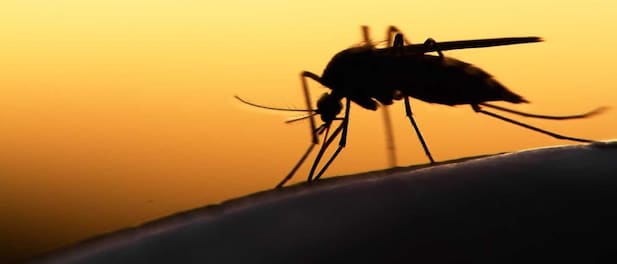Gaps in access to equitable and quality care remain an important challenge to malaria elimination. The technical complexity, very few developers and lack of large market size are some of the challenges that impedes development of effective vaccines against this parasite.
Ever since Ronald Ross discovered malaria parasites in an Anopheles mosquito in 1897, controlling insect vectors has played an increasingly important role in reducing the burden of the disease.
For decades, indoor residual spraying (IRS) with insecticides was the only weapon against mosquitoes and proved an effective instrument for protecting people inside their homes. The insecticide-treated nets (ITNs) became a new addition to the vector control strategies.
World Malaria Day, which was instituted by WHO Member States during the World Health Assembly of 2007, is an occasion to highlight the need for continued investment and sustained political commitment for malaria prevention and control. Observed on April 25, the theme of the campaign this year is "Time to deliver zero malaria: invest, innovate, implement."
Even though malaria is a preventable and treatable disease, it continues to have a devastating impact on the health and livelihood of people around the world. Nevertheless, the WHO’s current target of a 90 percent reduction in malaria cases and mortality rates by 2030 seems difficult unless there is a renewed global attention, increased funding and continued research and development of new interventions.
The World Malaria Report-2020, though showed some progress towards malaria elimination after several countries moved closer to the zero malaria goal, there are still around 84-85 countries, where it continues as an endemic.
However, the number of malaria endemic countries with fewer than 10,000 indigenous cases has now increased to 46 in 2021 from 27 in 2000. During the same period, the number of countries that reported fewer than 100 indigenous cases increased from 6 to 27, and the number of countries that reported fewer than 10 indigenous cases increased from 4 to 25. Two additional countries – Bhutan and Saudi Arabia – reported fewer than 10 indigenous cases in 2021 compared with 2020.
It was due to the strong commitment by malaria endemic countries and partners to deliver vital interventions for malaria prevention, diagnosis and treatment that led to fewer deaths and a much slower rate of increase in new cases.
But, following Covid-19 pandemic, progress in the development of standard vector control tools has plateaued. There is therefore an urgent need to develop novel interventions that address the spread of insecticide resistance and fill the vector control gaps for better protection.
Urgent need for vaccine development
There is an urgent need for a new approach to fight malaria. While there has been a reduction in the number of deaths from malaria especially the childhood deaths, the overall trajectory has plateaued in the last few years. Rampant use of insecticides and drug resistance is impeding the advancements in malaria control now.
This calls for developing an effective vaccine as part of a multi-pronged strategy to treat malaria. But, vaccines have taken decades to develop given the complicated structure and lifecycle of the malaria parasite.
The overall worldwide demand for the malaria vaccine could be more than 100 million doses per year. It is therefore crucial to have more vaccines to withstand the disruptions in supply chains.
According to a study malaria vaccine research and development faces formidable obstacles because many vaccine candidates will probably only be effective in a specific species at a specific stage. In addition, Plasmodium actively subverts and escapes immune responses, possibly foiling vaccine-induced immunity. Elimination of malaria will therefore ultimately depend on the development of highly effective vaccines.
Since the first malaria vaccine Preferred Product Characteristics (PPCs) were published in 2014, major milestones in R&D have been achieved. The PPCs are key tools to incentivise the development of urgently needed health products. In 2021, RTS,S/AS01 became the first malaria vaccine to be recommended by WHO for use in settings with moderate to high transmission in sub-Saharan Africa. However, this vaccine, developed by GlaxoSmithKline (GSK) was found to prevent only 44 percent of malarial episodes in young children.
Post this, the updated malaria vaccine PPCs were published in 2022, which included an expanded set of strategic goals for malaria vaccine R&D for the prevention of blood stage infection, reduction of morbidity and mortality, and reduction of community-level transmission. Implementation of the malaria vaccine through pilot introductions in Ghana, Kenya and Malawi has resulted in substantial reduction in malaria and a drop in child deaths. According to the WHO, the first malaria vaccine was safe and effective, and, if implemented broadly, the vaccine could save tens of thousands of lives each year.
New hope on R21
A new vaccine developed at the University of Oxford, code named as R21 claims to be far more effective than the earlier vaccine. This, however, has to be formally approved by the WHO on its safety and effectiveness. Ghana has become the first country in the world to approve the new malaria vaccine from Oxford University.
Serum Institute of India expects to produce around 200 million doses of this vaccine, which is meant for children between 5 months and 3 years old.
Both the earlier and the new vaccines have similarities and target the first stage of the parasite's lifecycle by intercepting it before it gets to the liver and establishes a foothold in the body. The vaccines are built using a combination of proteins from the malaria parasite and the hepatitis B virus, but Oxford's version has a higher proportion of malaria proteins. The cost per dose of R21 is expected to be cheaper than the earlier one.
Other malaria vaccine candidates, including transmission-blocking vaccines that target the sexual stage of parasite development in the mosquito, and mRNA vaccines against malaria, are also there in development or trial phases.
Way forward
All countries should use a tailored mix of recommended malaria control interventions including the malaria vaccine to increase impact in controlling malaria. Accelerating the elimination of malaria, and eventually interrupting its transmission, requires data and information from surveillance systems to inform decisions on the optimal deployment and impact of interventions. Effective surveillance of malaria cases and deaths, and of key entomological and efficacy indicators are also essential for identifying which areas or population groups are at higher risk of malaria or are vulnerable to reducing the efficacy of interventions.
Gaps in access to equitable and quality care remain an important challenge to fight against malaria. Absence of a robust traditional market, few developers, and the technical complexity leads to challenges in developing new and effective vaccines against this parasite.
The way forward calls for boosting the funding from various health bodies for a broader programme roll out. Research should also be spruced to maximise the efficacy of the vaccines.
Even where access to interventions is adequate, the effectiveness and performance of malaria control tools face considerable challenges that threaten progress in the fight against malaria. There is still no proper understanding of the complex immune response to malaria infection. Malaria parasites are genetically complex and can produce thousands of antigens.
Other roadblocks are insecticide resistance, poor allocation efficiency of delivery systems, retention of nets by households and the use of nets by household members. Besides, the vaccines for malaria cannot produce a lifelong protection. The overall status of surveillance systems, especially in moderate and high transmission countries where the malaria burden is concentrated, remain weak.
Strengthening surveillance will require greater investment not only in digital solutions, but also in greater health workforce capacity and synergies across disease and health programmes.
The ideal strategy, however, should focus on tackling drug resistance, efficiently tracking the disease spread, identifying the populations most at risk, and developing viable alternative treatments. The governments and various other stakeholders need to device strategies such as housing design, environmental management and poverty alleviation for effectively reducing the burden of the disease.
—The author, Dr Vanita Srivastava, is an independent science and health writer. The views expressed are personal.
Read her previous articles here
(Edited by : C H Unnikrishnan)
First Published: Apr 24, 2023 10:10 PM IST
Check out our in-depth Market Coverage, Business News & get real-time Stock Market Updates on CNBC-TV18. Also, Watch our channels CNBC-TV18, CNBC Awaaz and CNBC Bajar Live on-the-go!







